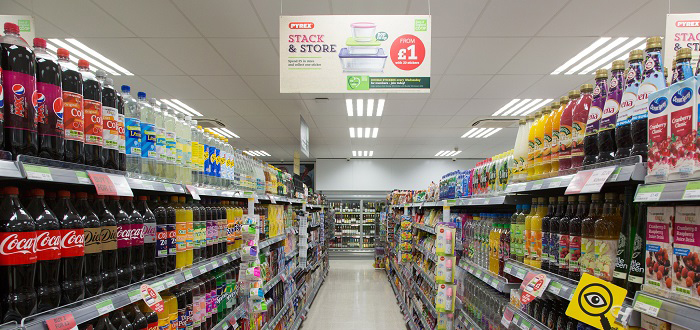-
BLACKOUT TECHNOLOGIES TARGETS TELEMATICS-INTEGRATED MOBILE DEVICE BLOCKING TO COMBAT SMARTPHONE DISTRACTION - 2 days ago
-
OpenADR Alliance announces first OpenADR 3.0 certified products with EVoke Systems, E.ON Energy and Universal Devices - March 25, 2025
-
Growing fulfilment and contract packer appoints new Managing Director - March 25, 2025
-
When is it time to invest in a WMS? Understanding the key trigger points - March 25, 2025
-
eCapital helps Vantage Recruitment on its journey to financial success - March 24, 2025
-
Hugo Beck Celebrates 70 Years of Packaging Innovation with Open House Events - March 20, 2025
-
PROLOG FULFILMENT SUPPORTS LUNA DAILY’S COMMITMENT TO BETTER BODY CARE FOR ALL WOMEN - March 19, 2025
-
Motion Ventures launches largest-ever maritime tech fund at $100M to meet the industry’s new pace of adoption - March 18, 2025
-
ITD GLOBAL APPOINTS GROUP CHIEF REVENUE OFFICER - March 17, 2025
-
SURECAM TEAMS UP WITH ENTERPRISE FLEX-E-RENT FOR VEHICLE REPAIR & MAINTENANCE CONFERENCE - March 14, 2025
Four ways the UK retail supply chain differs from the rest of Europe.
Author: Mikko Kärkkäinen, Group CEO, RELEX Solutions
The wide State of the Retail Supply Chain study conducted in 2017 by Martec International indicates that, in many areas, UK and Irish retailers are ahead of their Continental European counterparts. In the study, UK and Irish retailers with sales totalling €88 billion and accounting for 24% of the total sales in their markets were interviewed. Interestingly, the study found that the general level of satisfaction regarding supply chain planning and forecasting systems appears to be higher for UK and Irish retailers in comparison to their counterparts in the rest of Europe.
1) UK retailers are more satisfied with their supply chain systems
Looking at the results, UK retailers are slightly more satisfied (29%) with the analysis and reporting features in their supply chain systems, when compared to their European counterparts (24%).
However, even though the results show that UK retailers are more satisfied than the other markets, a high level of dissatisfaction with systems is dominant. Most of the UK retailers indicated they need accurate forecasts of future out-of-stocks, rating this as the most desired feature.
2) Forecasting at shelf / fixture level is an issue
The study found that the top overall challenges concerning forecasting are forecasting for new products and for promotions. While this seems to be the predominant challenge for UK retailers as well, the study indicated that UK retailers typically report fewer forecasting issues than other markets and express less anxiety in most forecasting categories.
The main challenge that stands out for UK retailers is their concern about forecasting at shelf / fixture level with a score of 5.8/10 against a European average of 4.8.
The reason behind the higher score could be the fact that the UK retail market has a higher concentration of multiple retailers and is dominated by larger chains, compared to the European market with lots of independent retailers. This means UK retailers have the possibility to aim for economies of scale, something independent retailers in Europe can’t. Forecasting by shelf / fixture level could therefore be seen as more important and more likely to cause issues for UK retailers.
3) Space and external data are being used in forecasts
The overall awareness of space data, such as minimum display requirements and changes in the amount of space in individual stores, into forecasting seems to be relatively low around Europe (an average score of 5.1/10) and demonstrates that few retailers consider space as part of their replenishment process. However, UK retailers scored slightly higher with 5.5, and ranked the highest together with their German counterparts. This is most likely the result of UK retailers tending to be early adopters of space management systems.
Sadly, the use of external data (such as weather or social media sentiment analysis) to enrich forecasting is even lower, where countries gave average marks of just 4.3/10. The UK topped the charts here with a score of 5.6, which seems to indicate that UK retailers are far more likely to already have systems and processes that integrate external data into their forecasts.
4) Single stock pool surprises
Out of the retailers with more than one sales channel taking part in the survey, 49 % said they operate a single stock pool that serves all their sales channels. Keeping in mind that the UK has been a long-running European leader in operating sophisticated omni-channel retail, it is surprising to read that only 38% (a 1% increase compared with 2016) of retailers are running a single stock pool.
In best cases, the benefits of running a single stock pool are a total stock reduction of around 20%. UK retailers should start looking at overcoming the possible complexities of switching to a single stock pool.
Interested in reading the full report? The State of the Retail Supply Chain 2017 is available here.
Are you a food and drug retailer? See the main takeaways for your sector summarized here

































